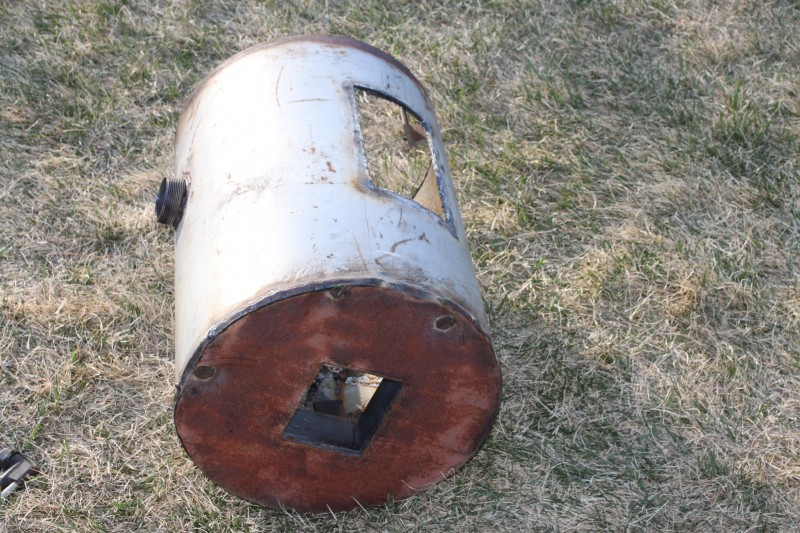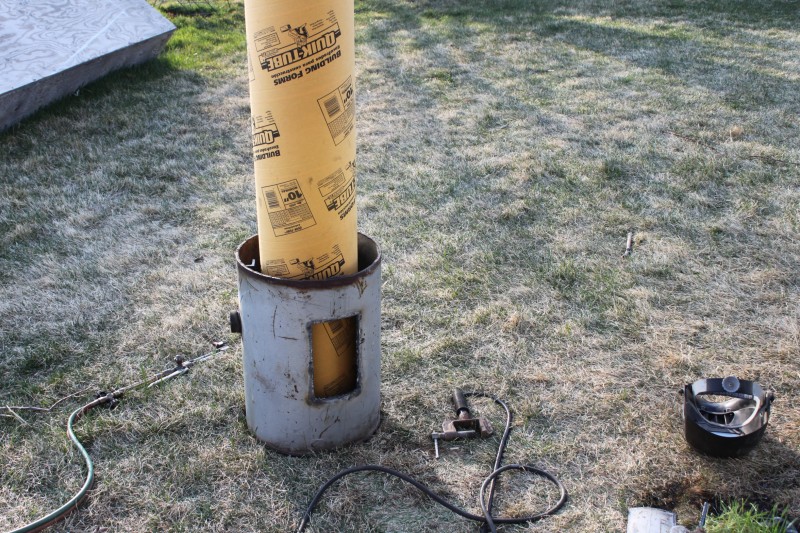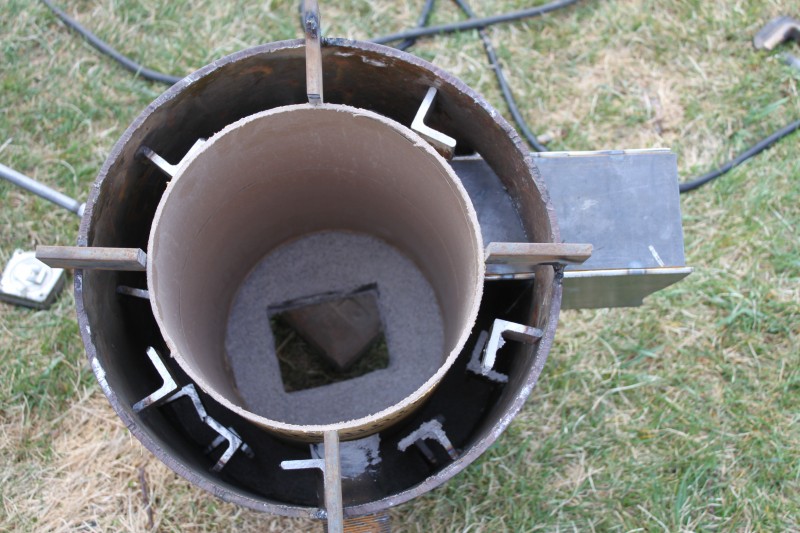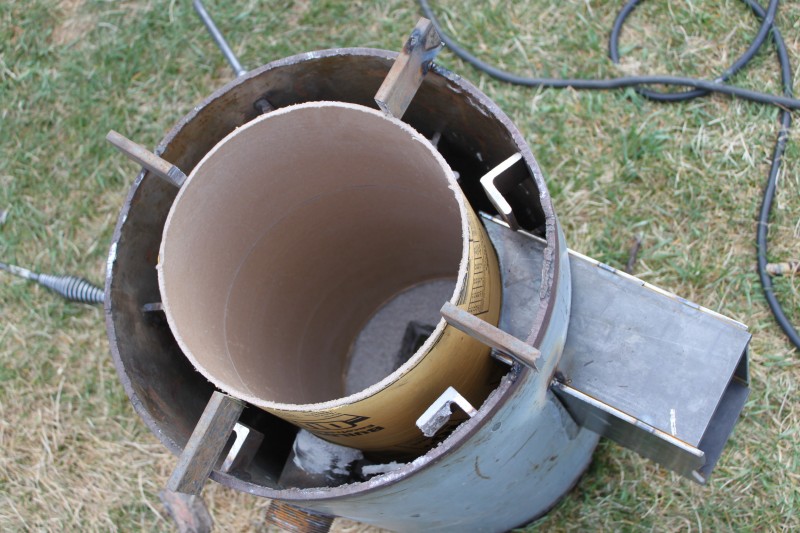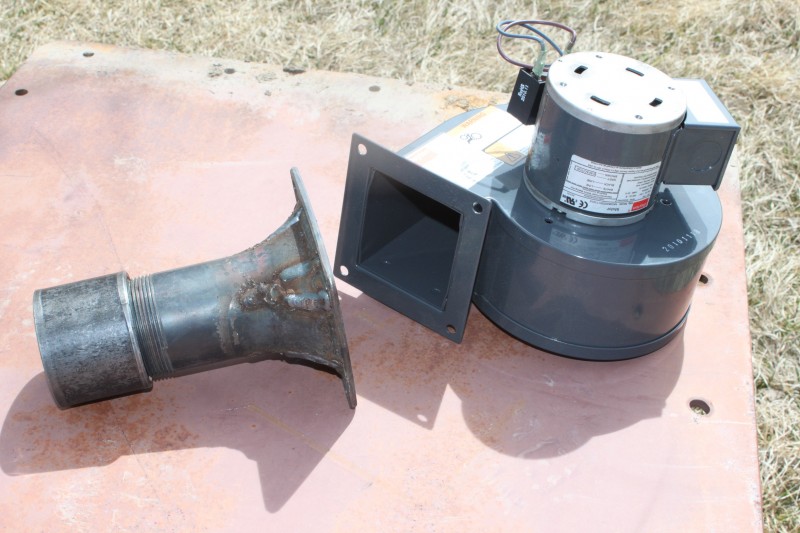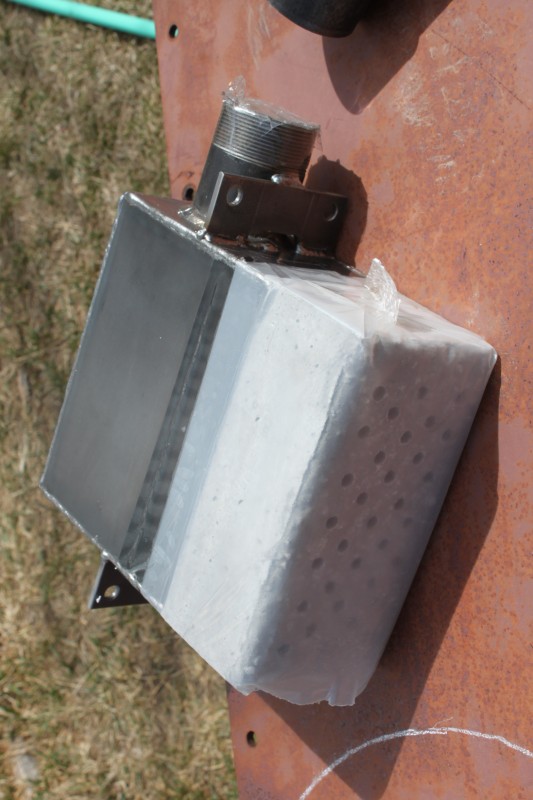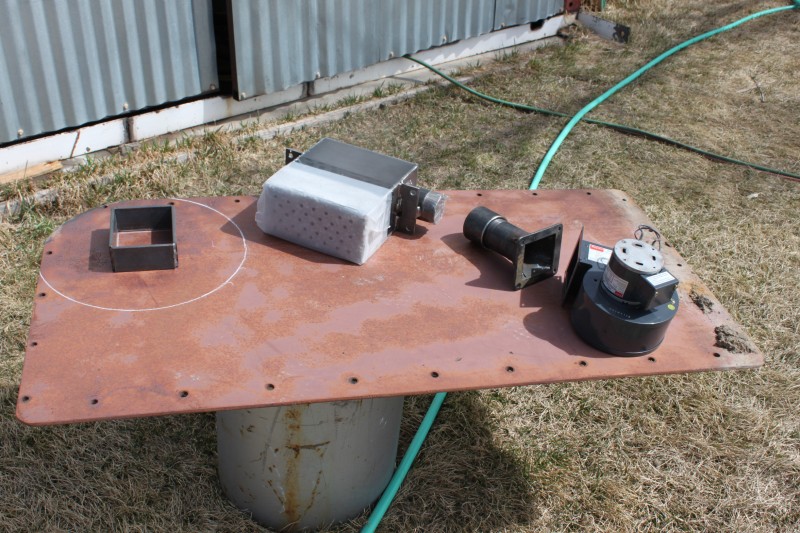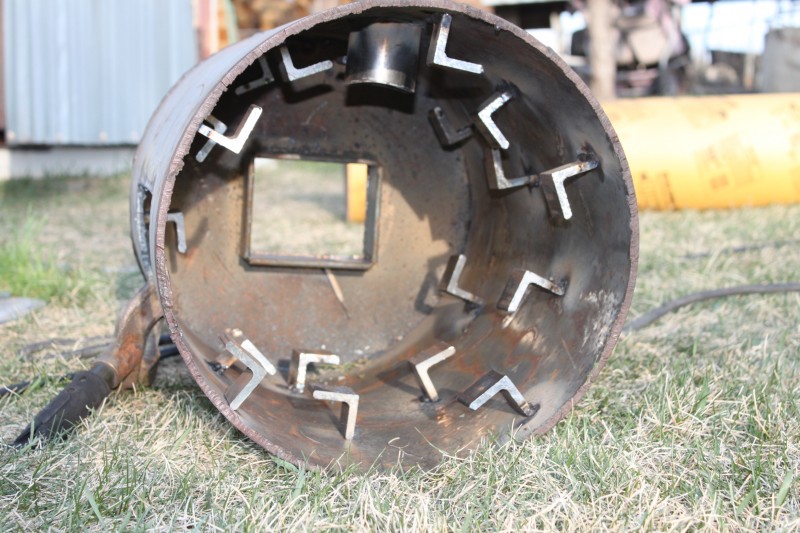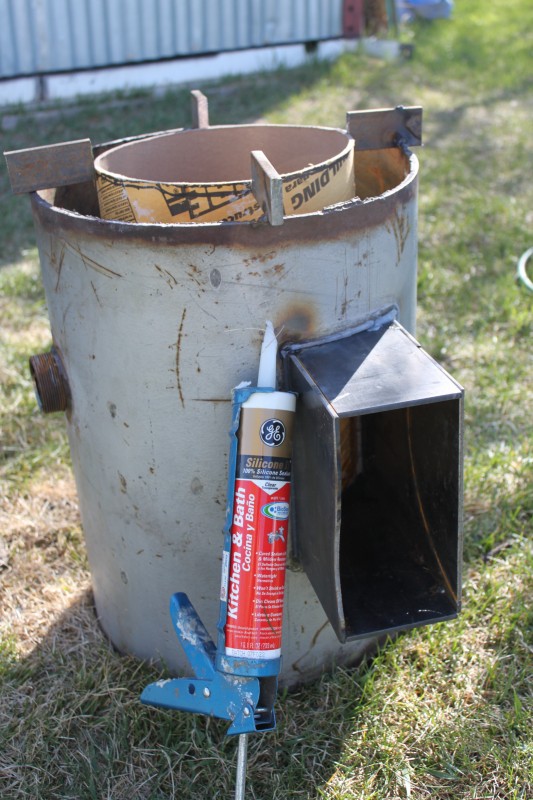
Silicone around seams You have to seal around all the cracks or the water from the refractory will run out
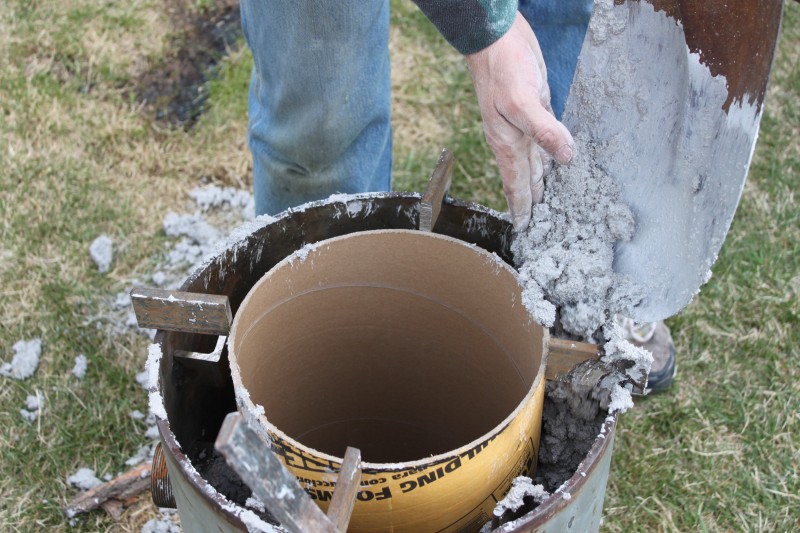
Fill with refractory It was a little tricky getting the refractory around the tube but I put it in slowly and used a a piece of strap to tamp it down and make sure I filled all the voids, particularly around where the burner goes.
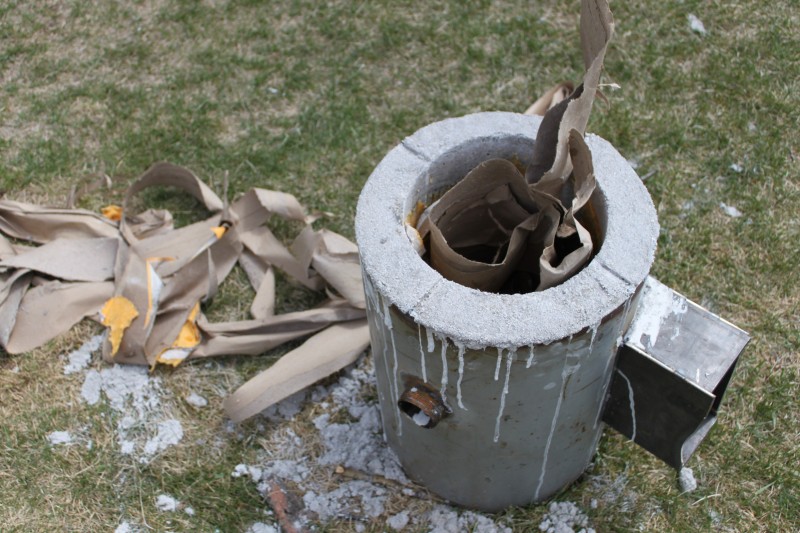
Pull out tube After it dried it was easy to pull the tube out. It had soaked up water from the refractory so it peeled right out.
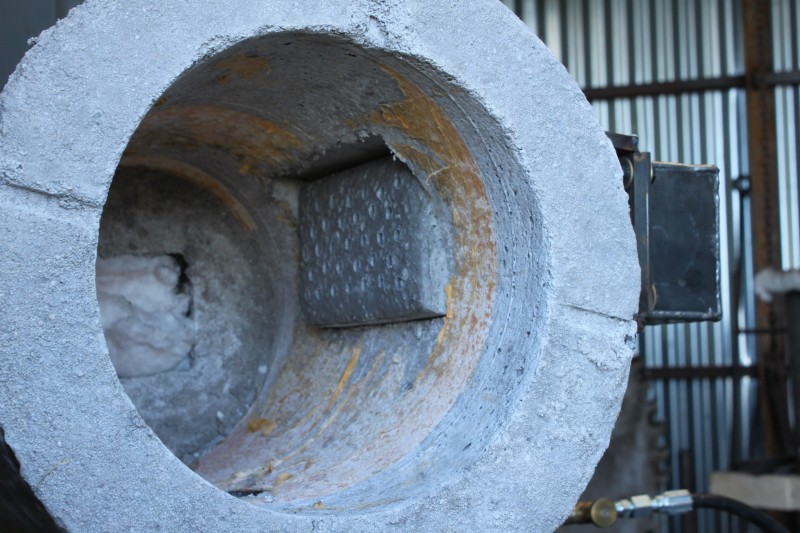
Finished Almost The ribbon burner is mounted. I pulled the mock up piece of steel out and inserted the burner. Fits like a glove.
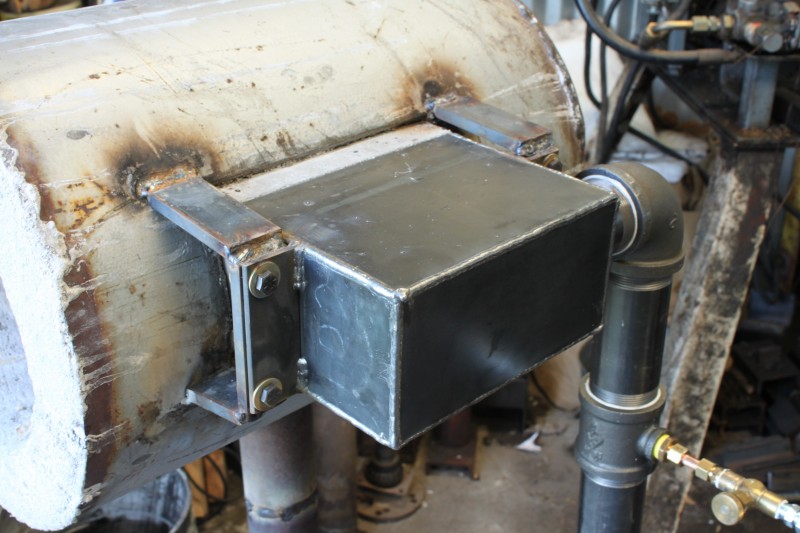
Mounting ribbon burner I positioned the burner where I wanted it and make and welded in brackets to hold it.
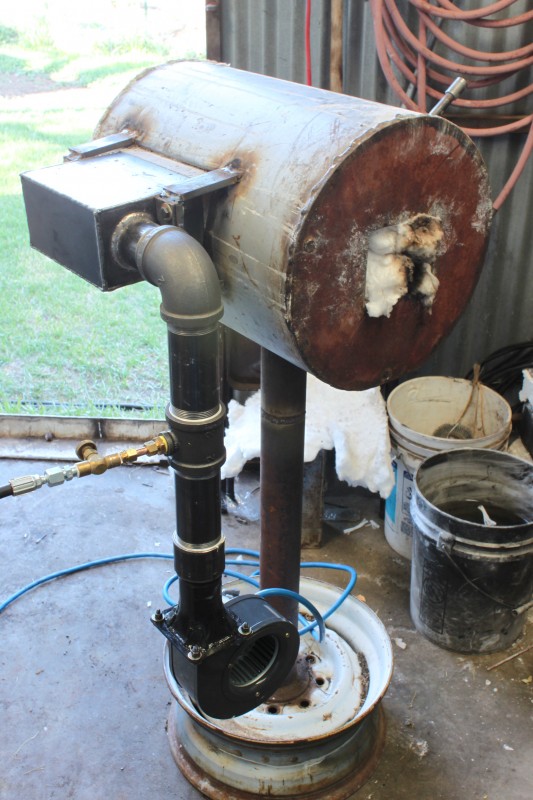
Air and propane plumbed. The blower is installed along with the propane nozzel. I got them from Pine Ridge burners along with the burner.
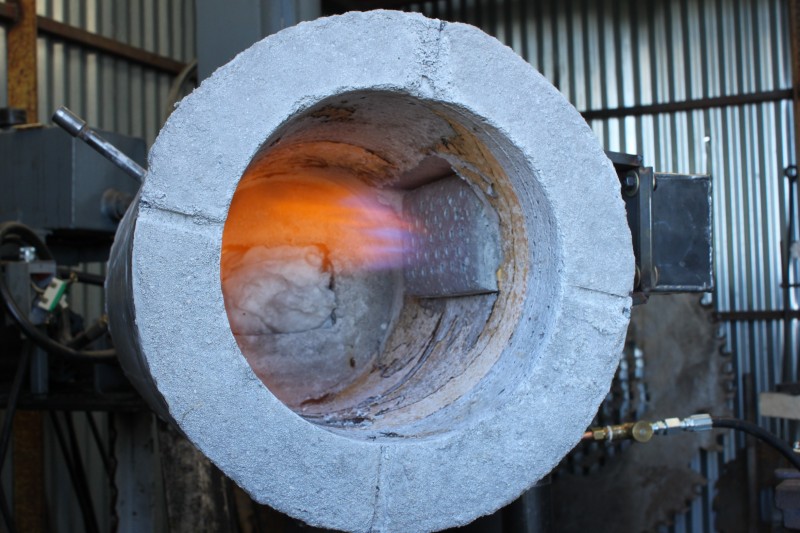
Fire it up IT WORKS. There is a lot of moisture in the refractory so be careful when you fire it the first few times. The small tube on the top left side of the forge is to put a digital probe into. I fired it to 800 F the first time and the water ran out of it every where. Then I went to 1200 and finally to 1800 F and it was good to go. If anyone has any questions about the build you can comment on the blog or email or phone me.

